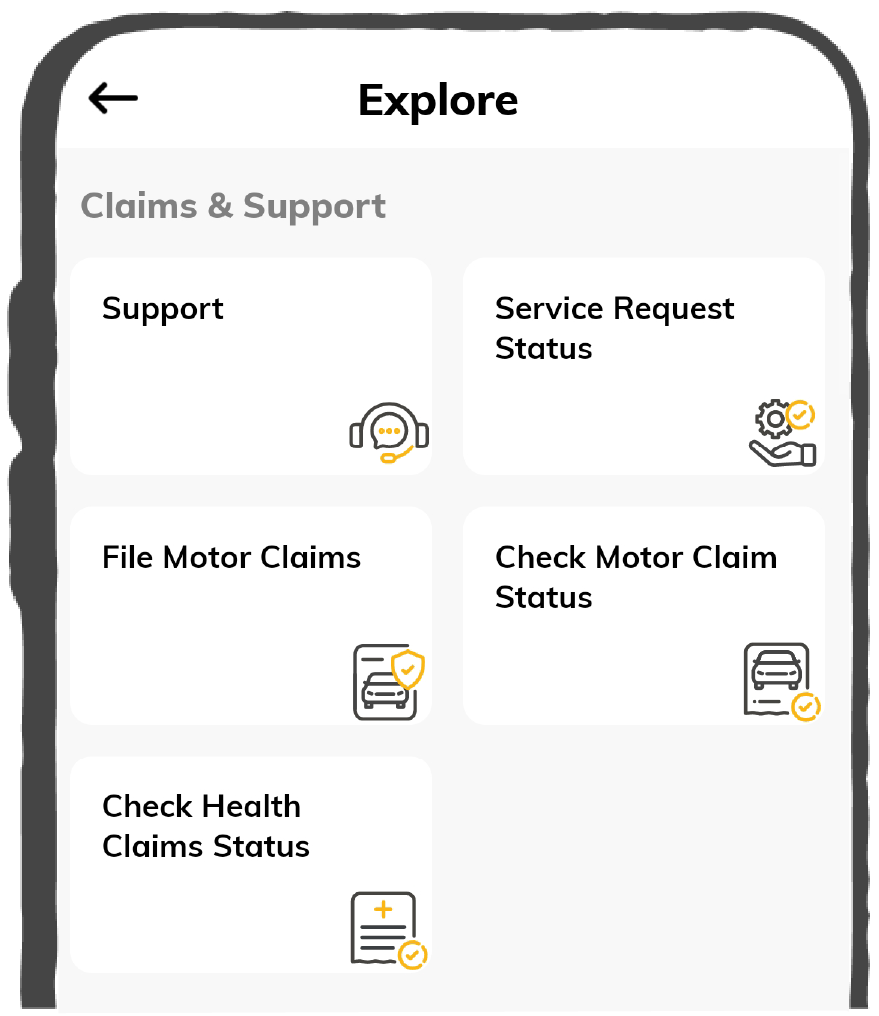What is the Difference Between EPF and EPS?

EPF stands for Employee Provident Fund, which is a retirement savings scheme mandatory for employees in India. It's a fund where the employer and employee contribute a percentage of their salary, accumulating over time and providing financial security upon retirement.
EPS stands for Employee Pension Scheme, a part of the EPF. It provides pension benefits to employees who contribute to the EPF scheme. It ensures a regular income for employees after retirement.
Most individuals need clarification on EPF and EPS. Although both are pension schemes the government initiated to help salaried individuals save for retirement, they have subtle differences. This article will examine the differences between EPF and EPS.

Table of Contents

What is EPF (Employee Provident Fund) and How Does it Work?
EPF (Employee Provident Fund) is a retirement savings scheme where both an employer and an employee contribute 12% of this fund's basic and dearness allowance (DA). It comprises a total contribution of 24%.
You can withdraw some part of this deposited amount before retirement. The total amount you can withdraw post-retirement.
When signing up for this scheme, you will get a UAN or a Universal Account Number that will remain with you until the end of your career. Then, when you transfer jobs, your UAN goes with you.
Who is Eligible for EPF?
Employees Provident Fund (EPF) is the formal name of this type of provident fund scheme. The EPF plan is subject to the following eligibility requirements:
The benefits of the EPF scheme are available to all Indian states.
Registration for an EPF account is required for salaried workers earning up to ₹15,000 per year.
Workers earning over ₹15,000 a year can open an EPF account if the assistant PF commissioner grants permission.
Companies that employ more than 20 people are required to sign up for the EPF program. Companies with less than twenty workers can choose to participate in the EPF program.
Once they join the EPF program actively, employees are eligible to earn a range of advantages from the fund, such as insurance and pension benefits.
What is EPS (Employee Pension Scheme) and How Does it Work?
EPS is another pension scheme that the Government of India offers. It springs from the EPF, i.e., not all of an employer’s contribution goes towards an Employee Provident Fund. 8.33% of this amount goes to the Employee Pension Scheme or EPS. The rest becomes the actual EPF contribution.
The maximum amount one can contribute to this scheme is ₹1,250. Employees do not contribute to this scheme.
The contributions are accumulated in a pension fund managed by the Employees' Provident Fund Organisation (EPFO). These funds are invested in government securities, bonds, and other approved instruments to generate returns over time.
Upon the employee's retirement, the accumulated funds in the EPS are used to provide a monthly pension. The amount of pension received is based on factors such as the length of the employee's service and their average salary during that period.
Who is Eligible for EPS?
In India, under the Employee Pension Scheme (EPS), any member contributing to the EPF is eligible for EPS benefits. This includes employees working in organisations covered under the EPF Act, where both the employer and employee contribute to the EPF scheme. The following list of requirements must be met to be eligible for EPS benefits:
You have to be an EPFO member.
You must be 50 years old for an early pension and 58 for a regular pension.
If you postpone the pension for two years (or until you turn sixty years old), you will be entitled to an additional 4% of the pension each year.
You had to have served for at least ten years.
Difference Between EPF vs EPS
Below are key differences between the Employee Provident Fund and the Employee Pension Scheme.
What are the Benefits of EPF?
Employee Provident Funding (EPF) is a welfare program encouraging employees to save money and arrange their finances. Here are a few advantages of EPF:
Emergency Withdrawals: In an emergency, employees can withdraw funds from their EPF account or receive advances.
PF Claims: In the event of a member's death, the nominees or the member's legal heirs will receive the PF amount.
Financial Security: Employers are encouraged to contribute to the PF under EPF. It encourages pension contributions from the worker and contributes to the employee's financial security after retirement.
Reduction in Contributions: Most significantly, the employer and the employee can deduct any contributions made to the provident fund from their income taxes.
Tax-Free Interest: Interest earned on investments made with provident funds is tax-free.
Risk-Rree Investment: Workers who invest in PF are rewarded with a competitive interest rate. PF investments are risk-free.
Life Insurance: Employees are eligible for life insurance under the EDLI plan if they pass away while employed.
Easy Transfer: EPFO permits transfers in case of a change in employment without imposing an exit load or affecting the overall investment value.
What are the Benefits of EPS?
The benefits of the Employees' Pension Scheme are as follows:
Fixed Income: Offers a fixed income during early retirement at age 50 or beyond retirement at age 58.
Withdrawal Permission: This allows the member to withdraw their entire pension at age 58 if they leave their employment 10 years before that age.
Early Retirement Pension: This pension is offered monthly to members who become totally and permanently incapacitated despite not completing the required pensionable service.
Pension for Family: Gives the member's family a pension if the person passes away before or after the pensionable service period.
Calculation of EPF
The Employee Provident Fund (EPF) is a pension scheme in India that requires contributions from employees and employers. This is how EPF is calculated:
Employee Contributions:
Contribute 12% of your basic pay and dearness allowance to your monthly EPF account.
The amount considered for calculating EPF is capped at ₹15,000 per month. Thus, if your basic pay + dearness allowance exceeds ₹15,000, only ₹15,000 will be considered when calculating your EPF contribution.
Employer Contributions:
Your employer pays up to 12% of your basic salary and dearness allowance towards social security benefits.
This total 12% gets divided as follows:
3.67% goes toward the EPF account.
Calculation of EPS
The Employee Pension Scheme (EPS) uses a formula to determine your monthly pension after retirement. Here's how it works:
Formula: EPS = (Service Period in Years x Pensionable Salary) / 70
Service Period: This refers to the overall duration of your contributions to EPS. To be eligible for a pension, you must have a minimum service period of 10 years.
Pensionable Salary: It is calculated as the average of your basic salary and dearness allowance and is done periodically, usually about five years before you retire.
To sum up the differences between EPF and EPS, EPF is a scheme where both an employer and an employee contribute part of the latter's salary. In contrast, only an employer contributes to EPS.
The Employee Provident Fund (EPF) and the Employee Pension Scheme (EPS) are important to employers and employees. Although these schemes have different purposes and operate under different regulations, they all aim to secure employees’ financial futures.













